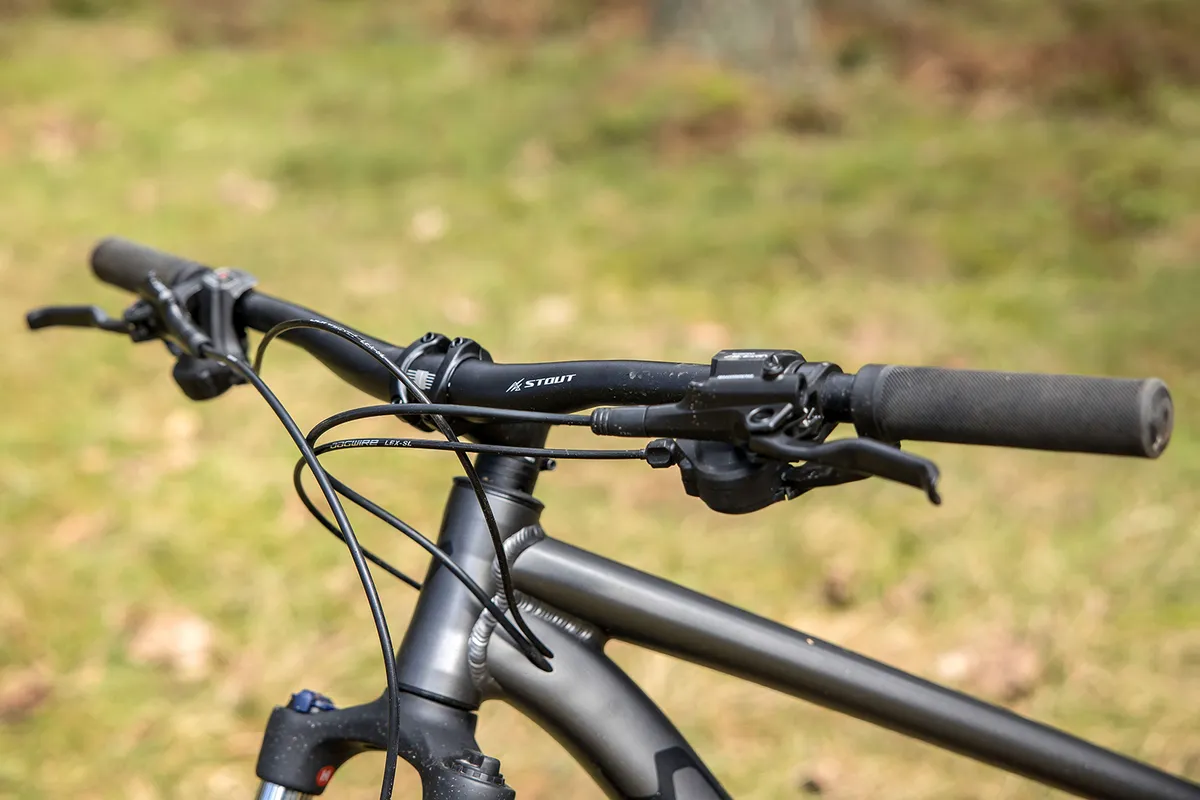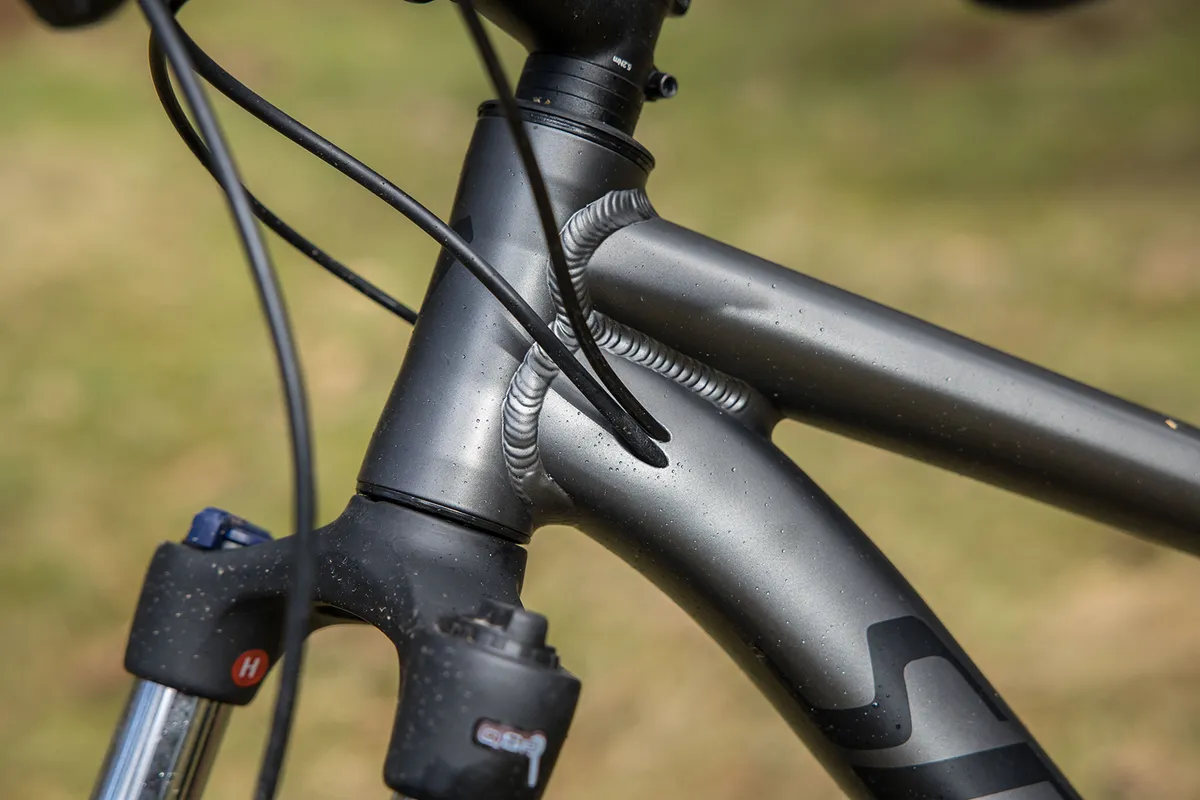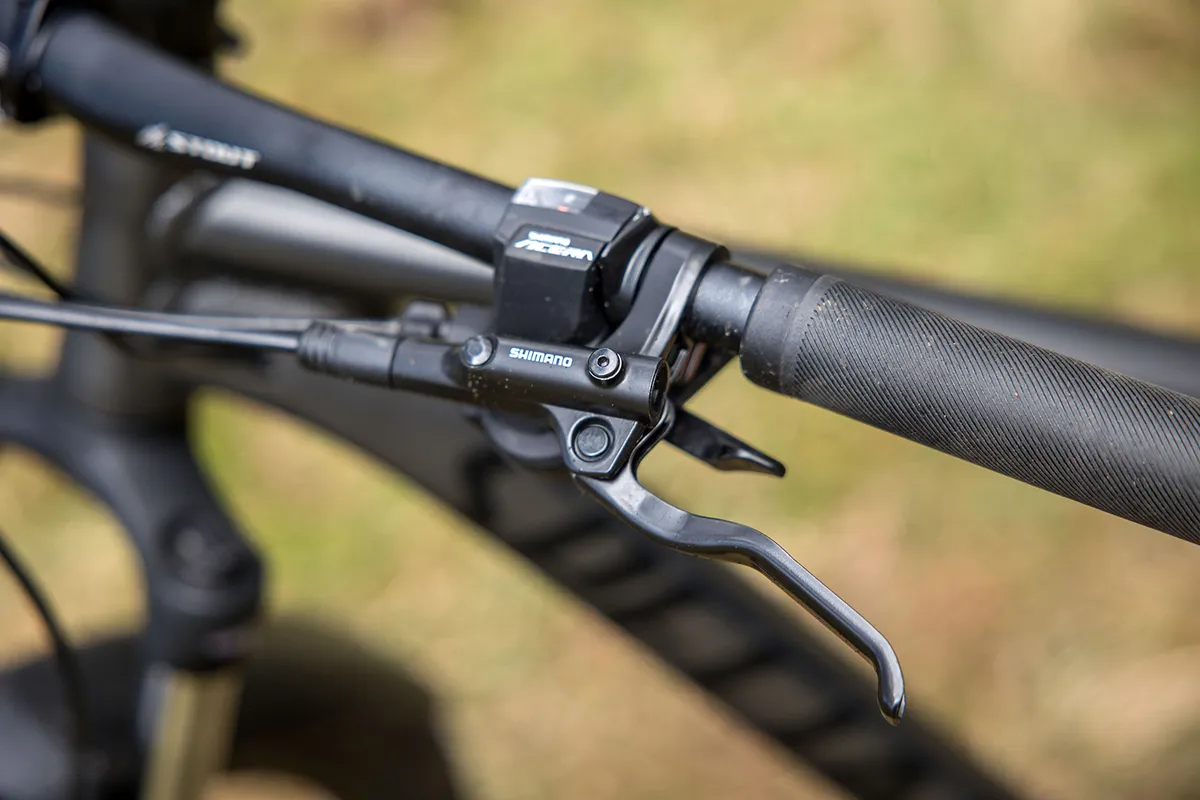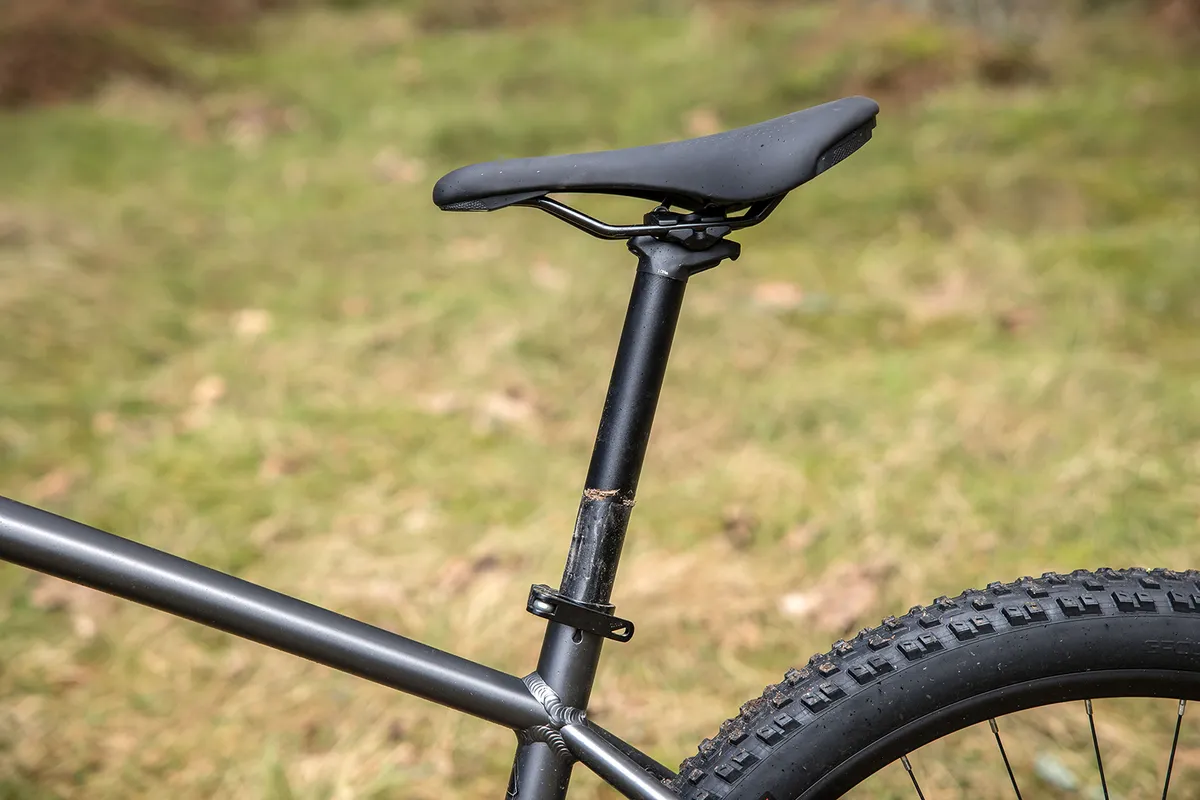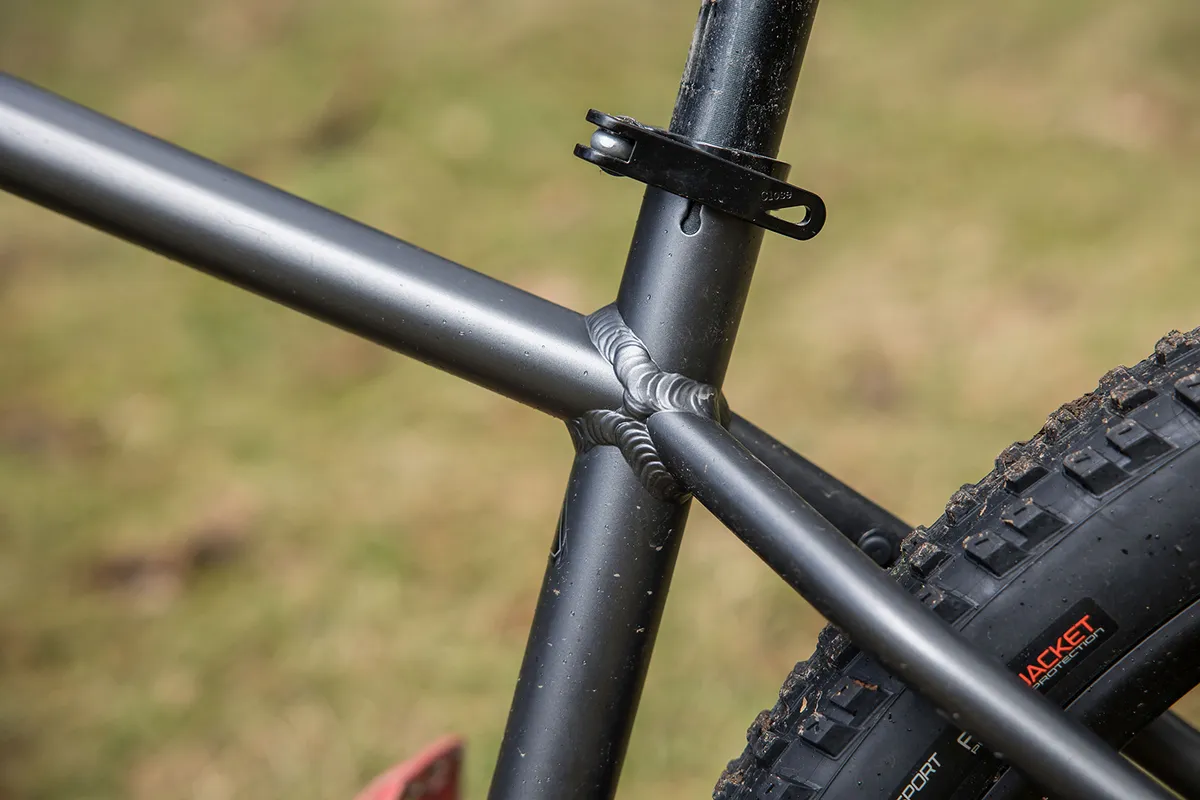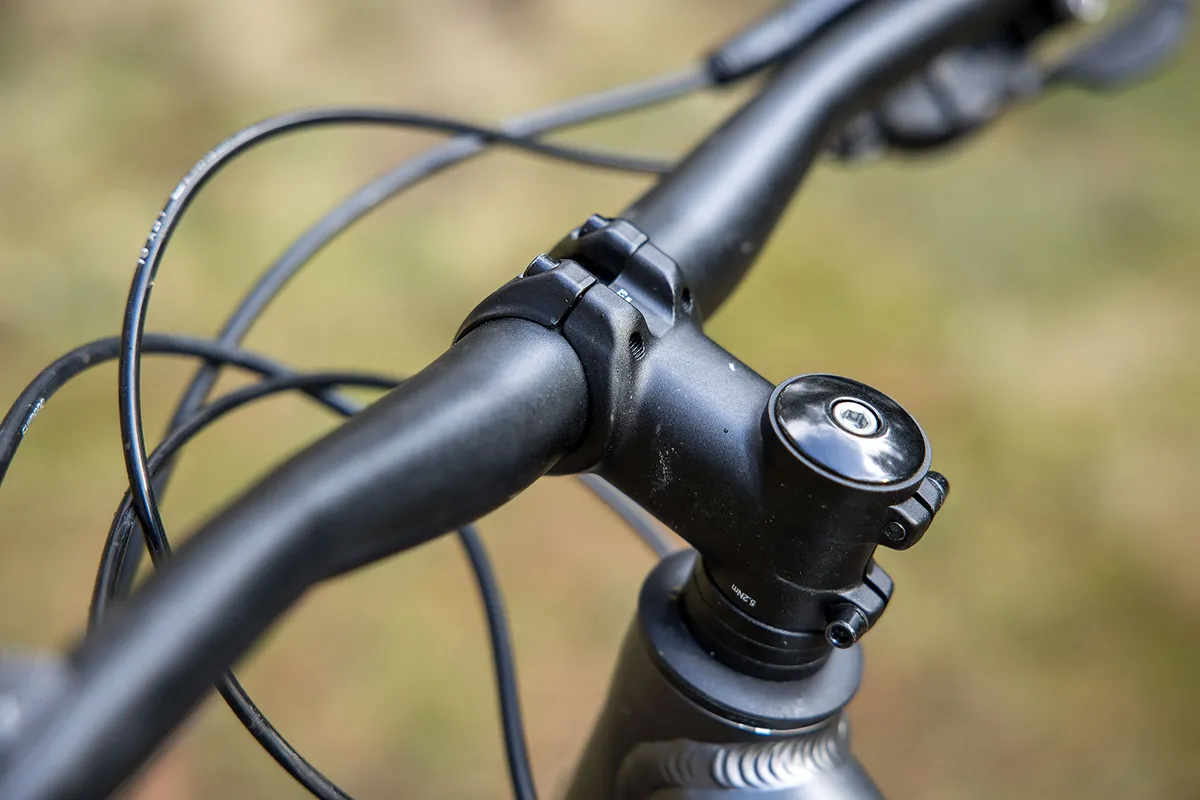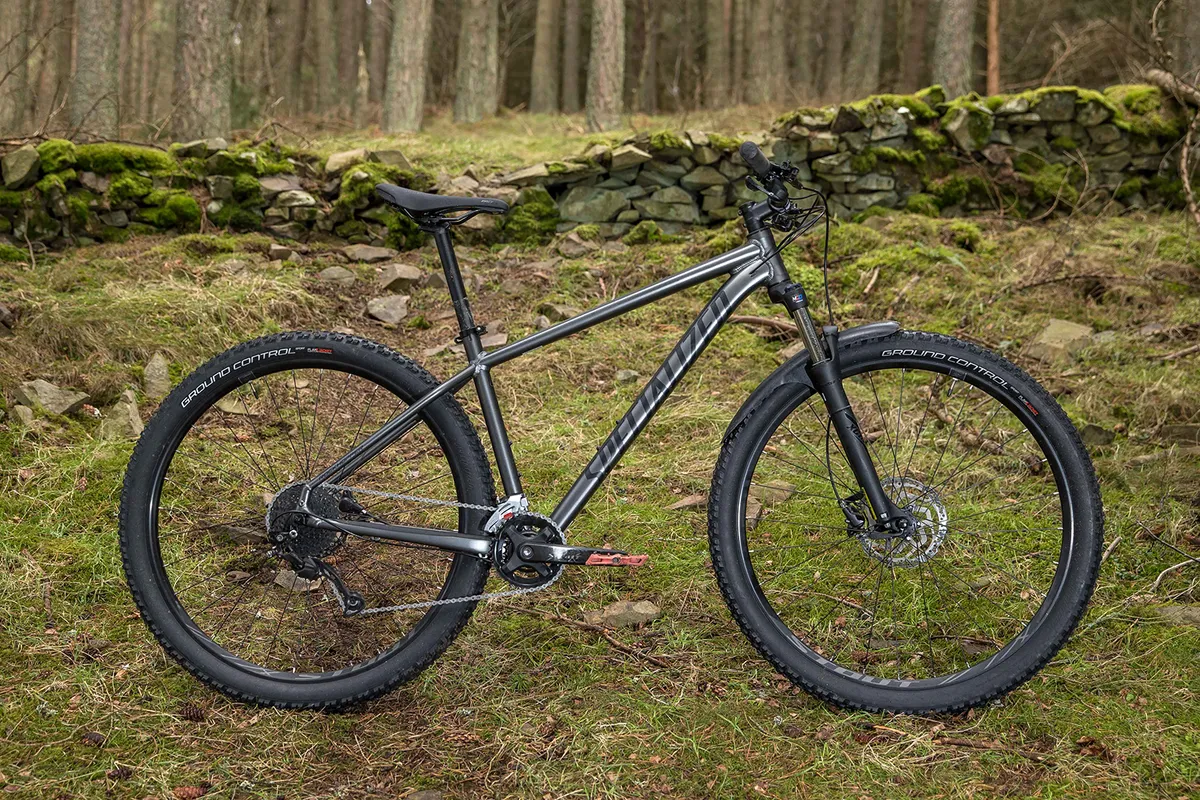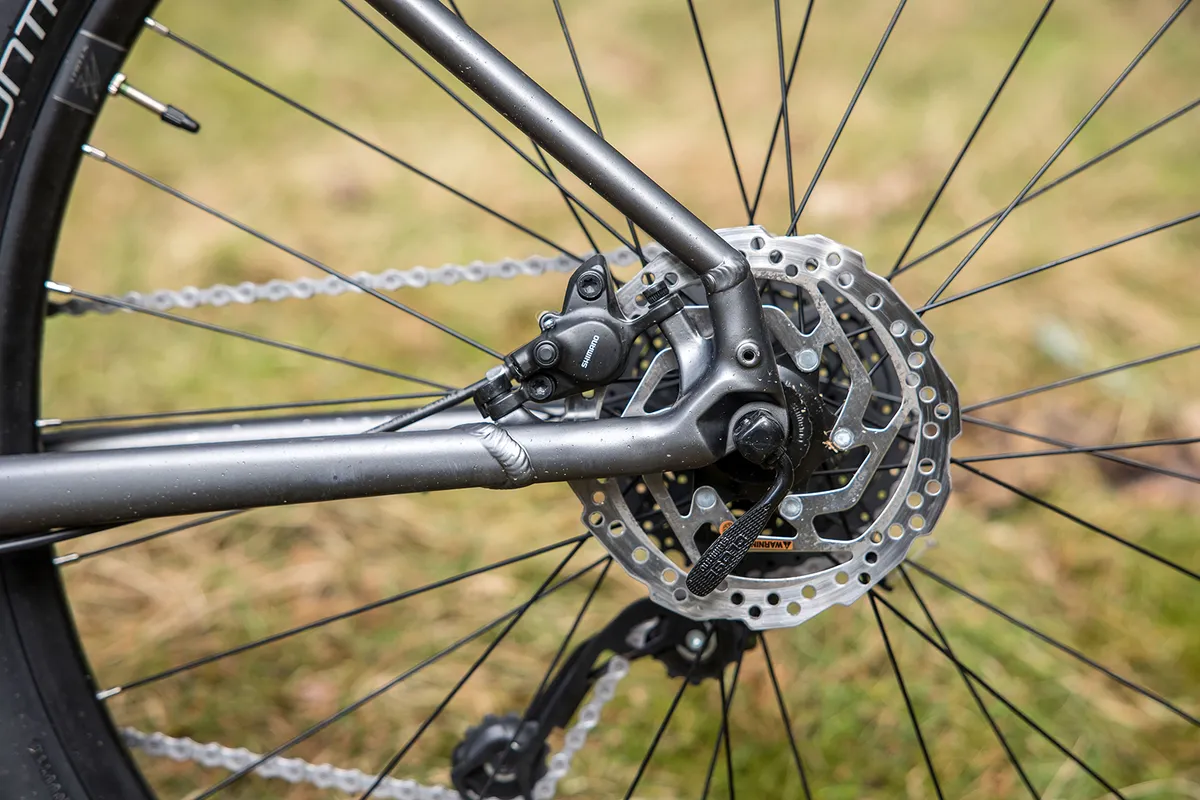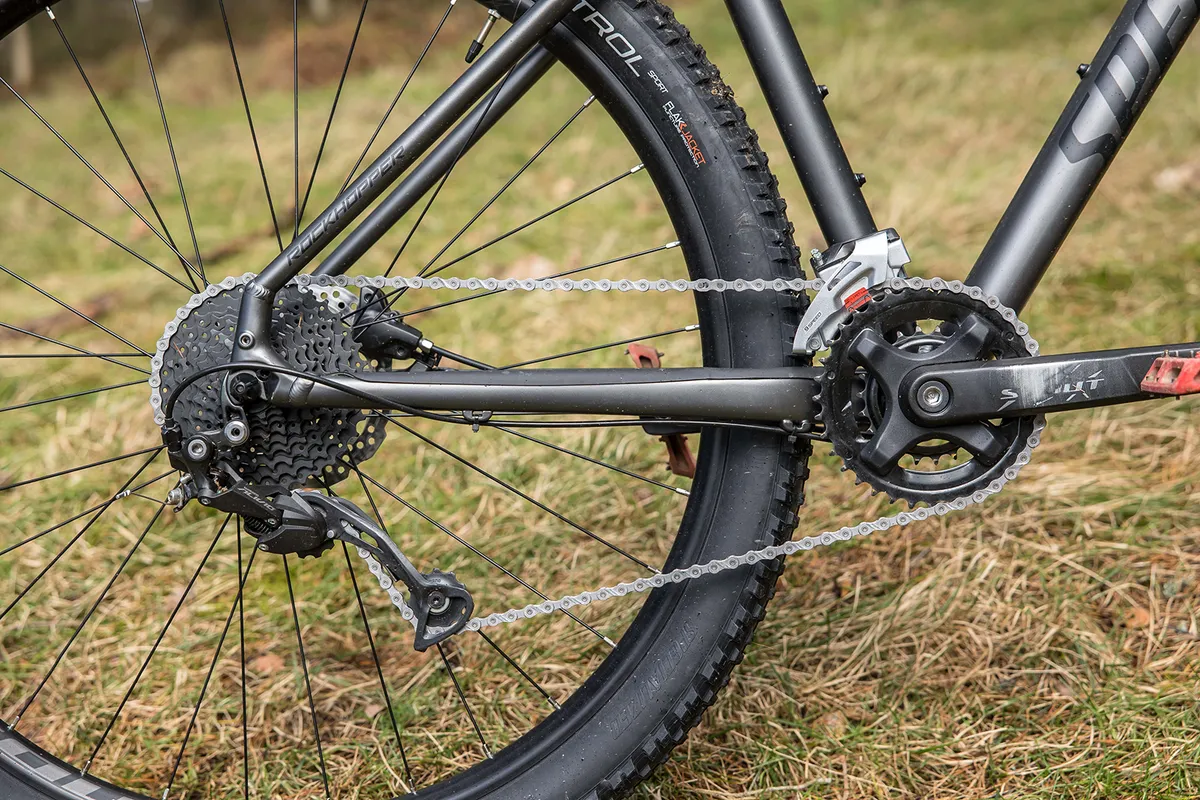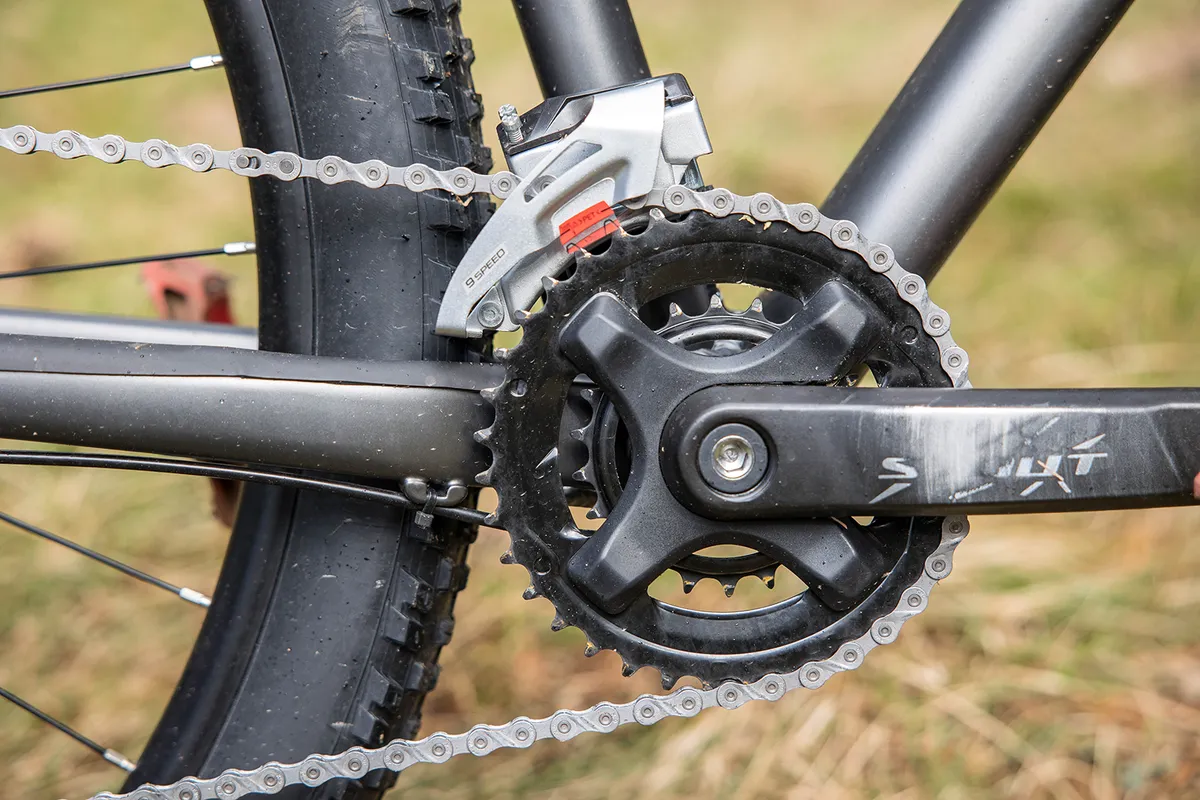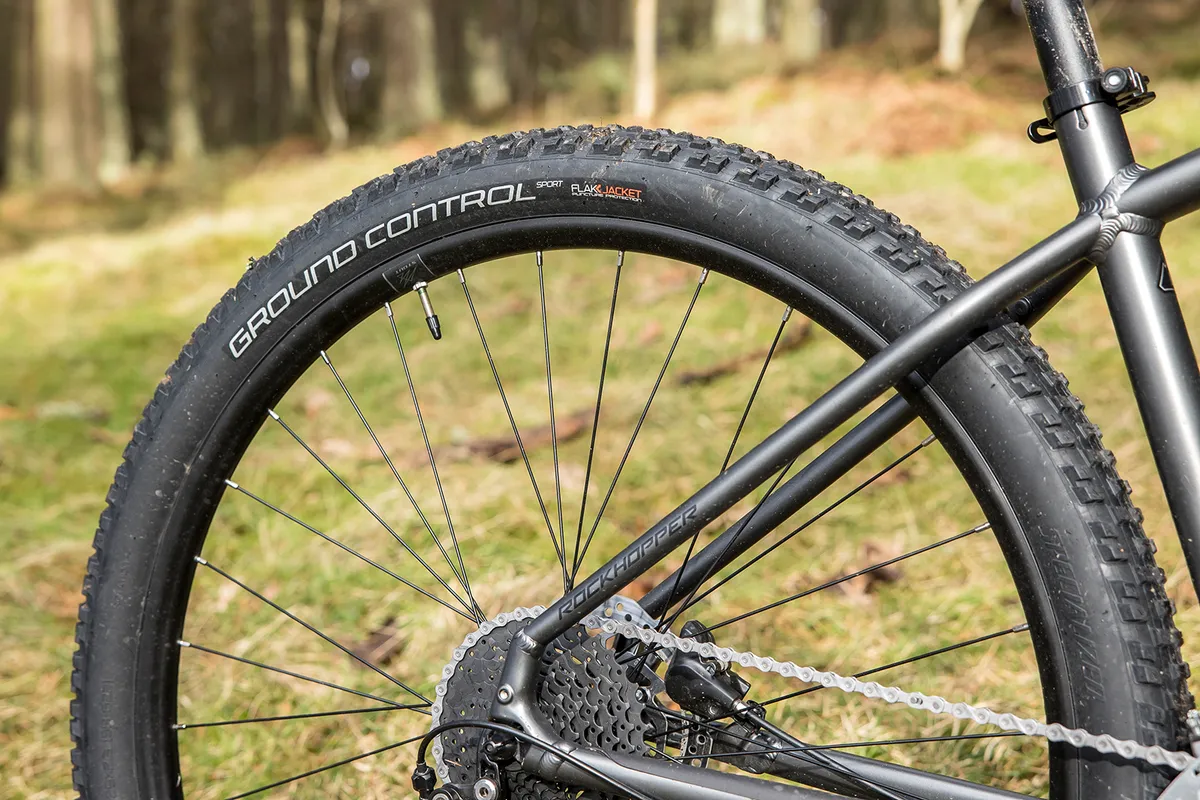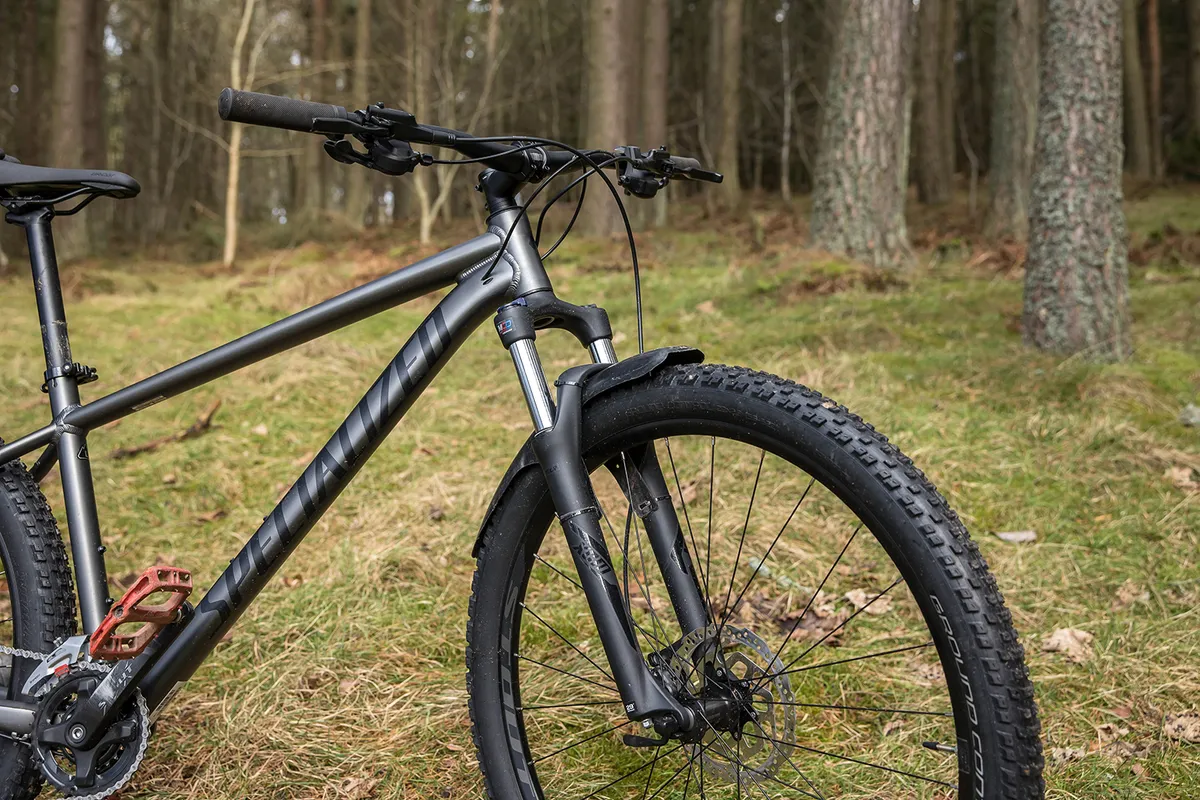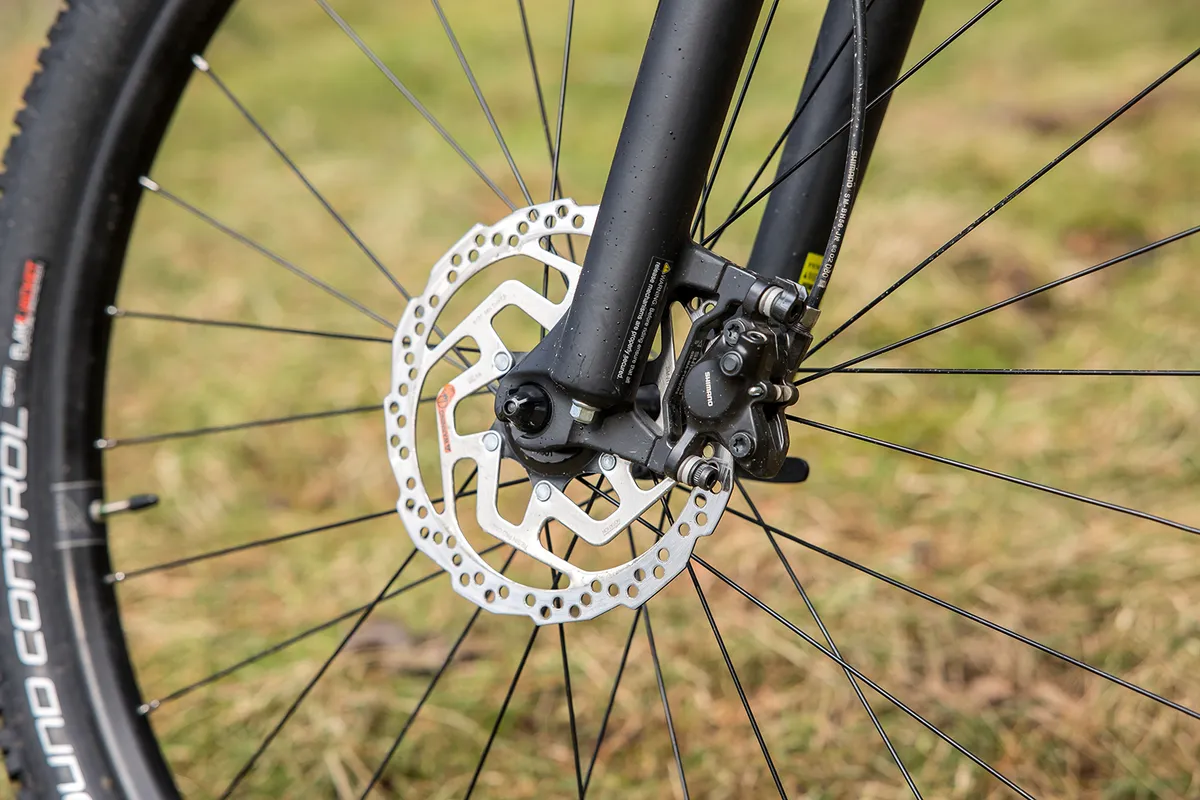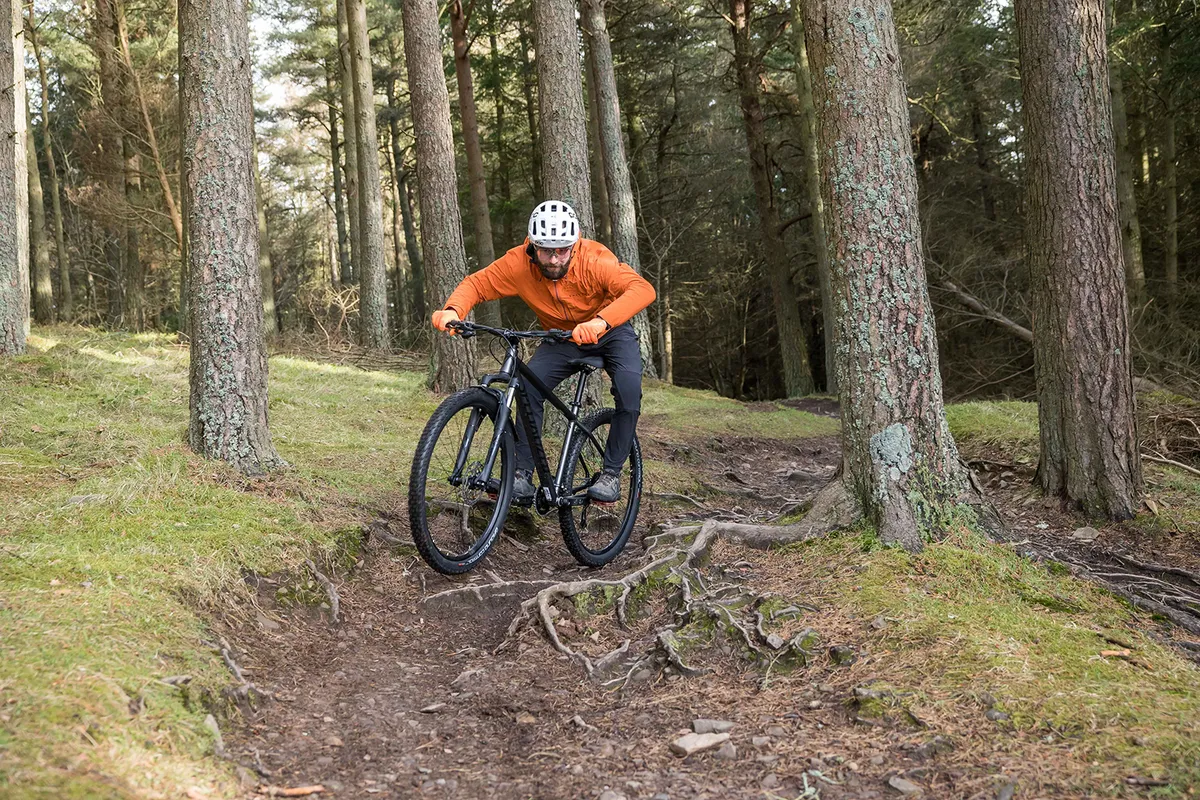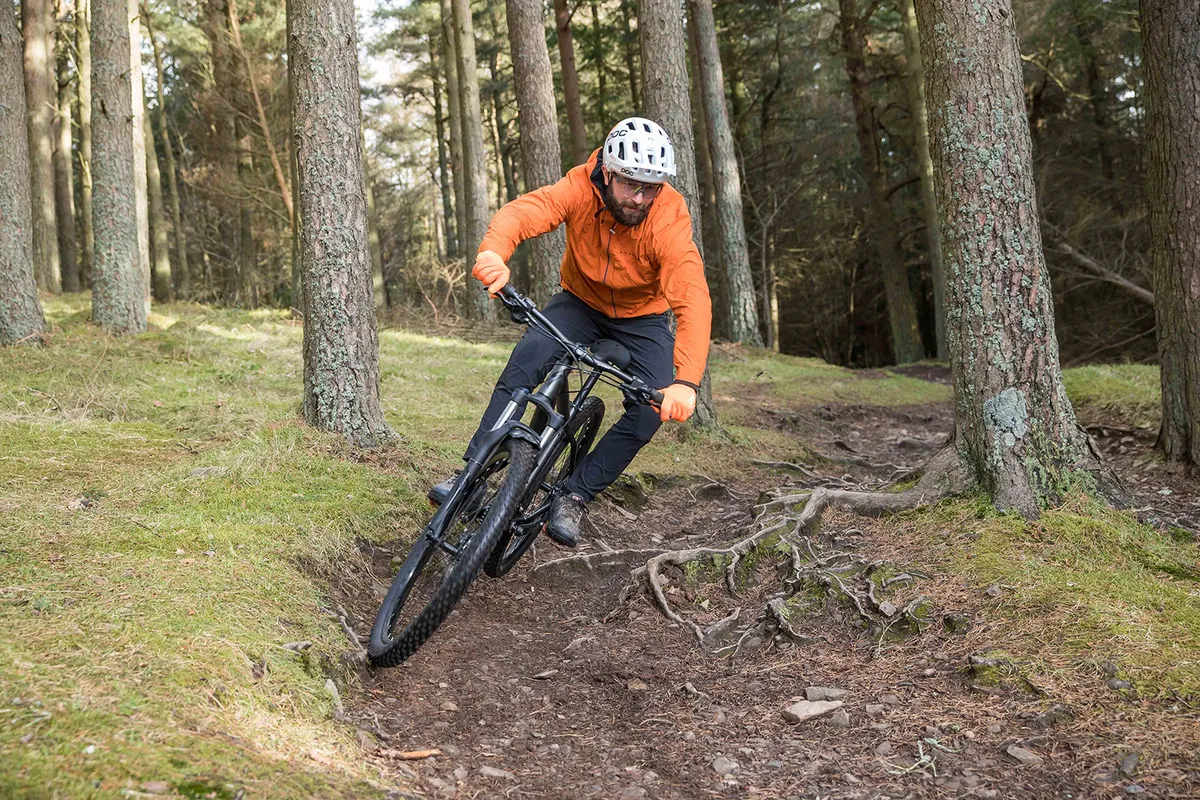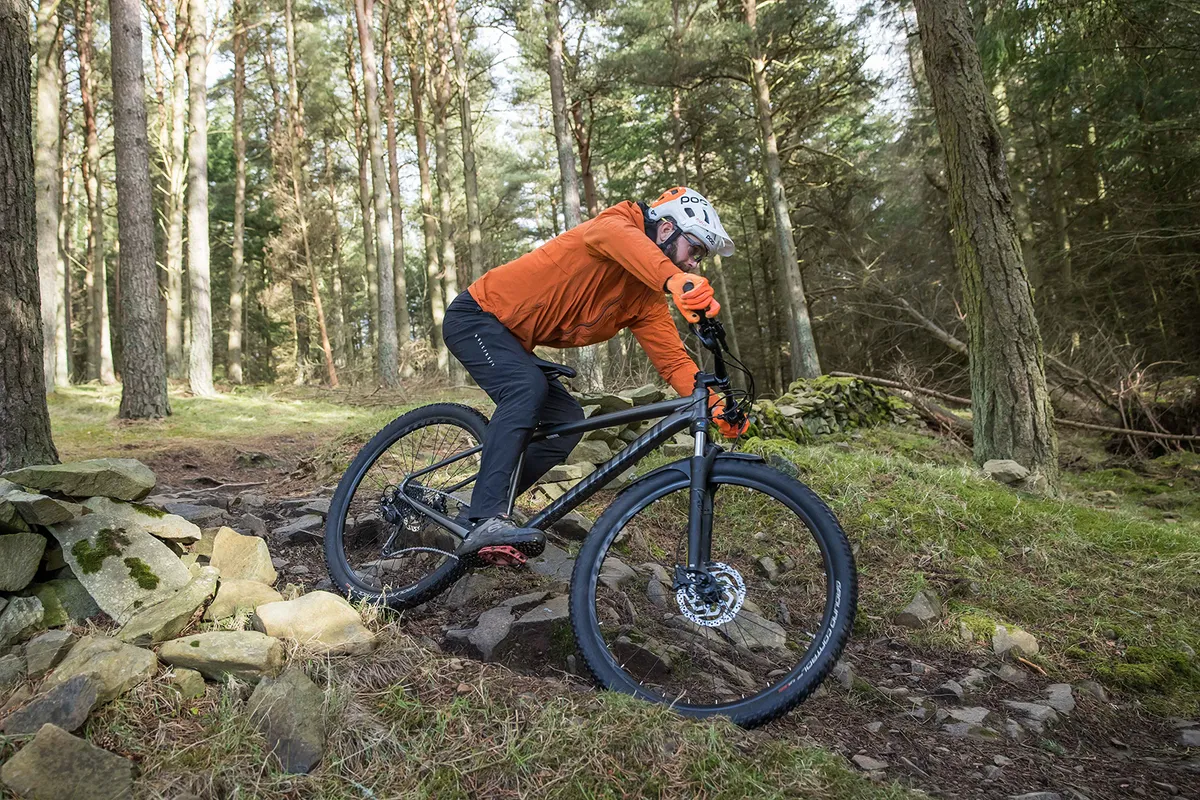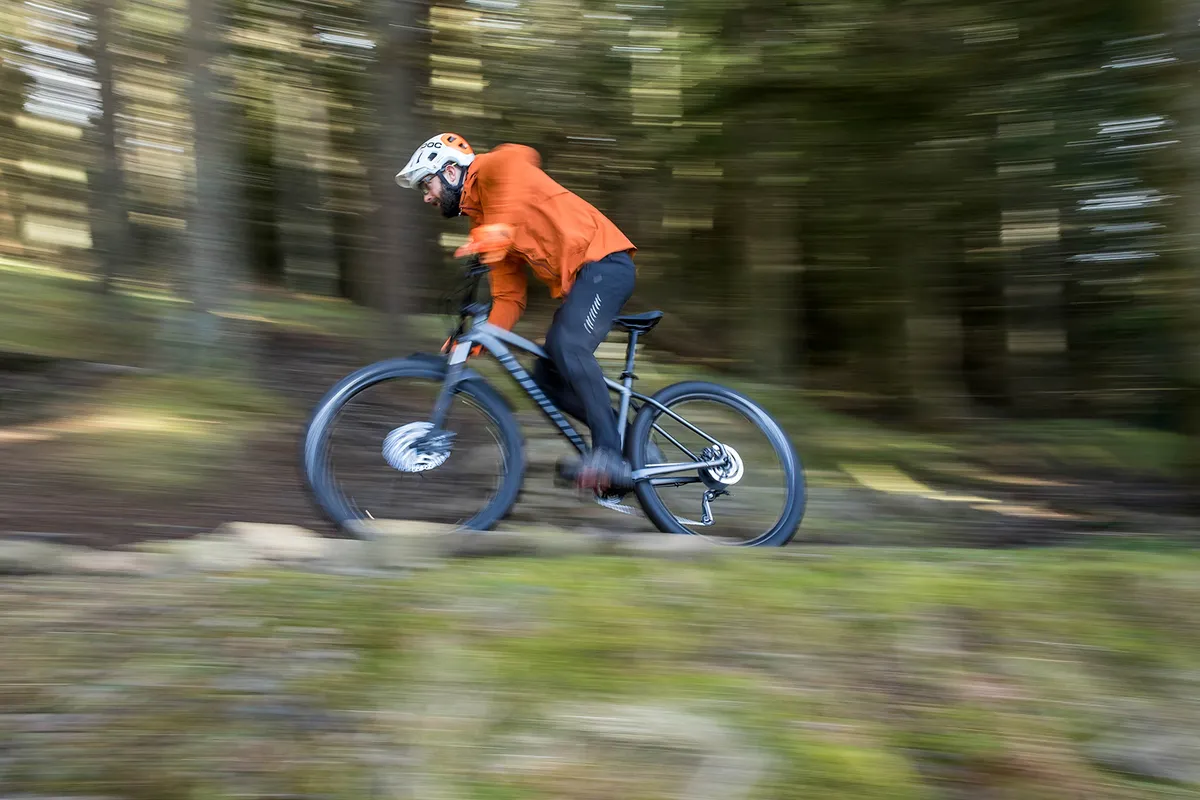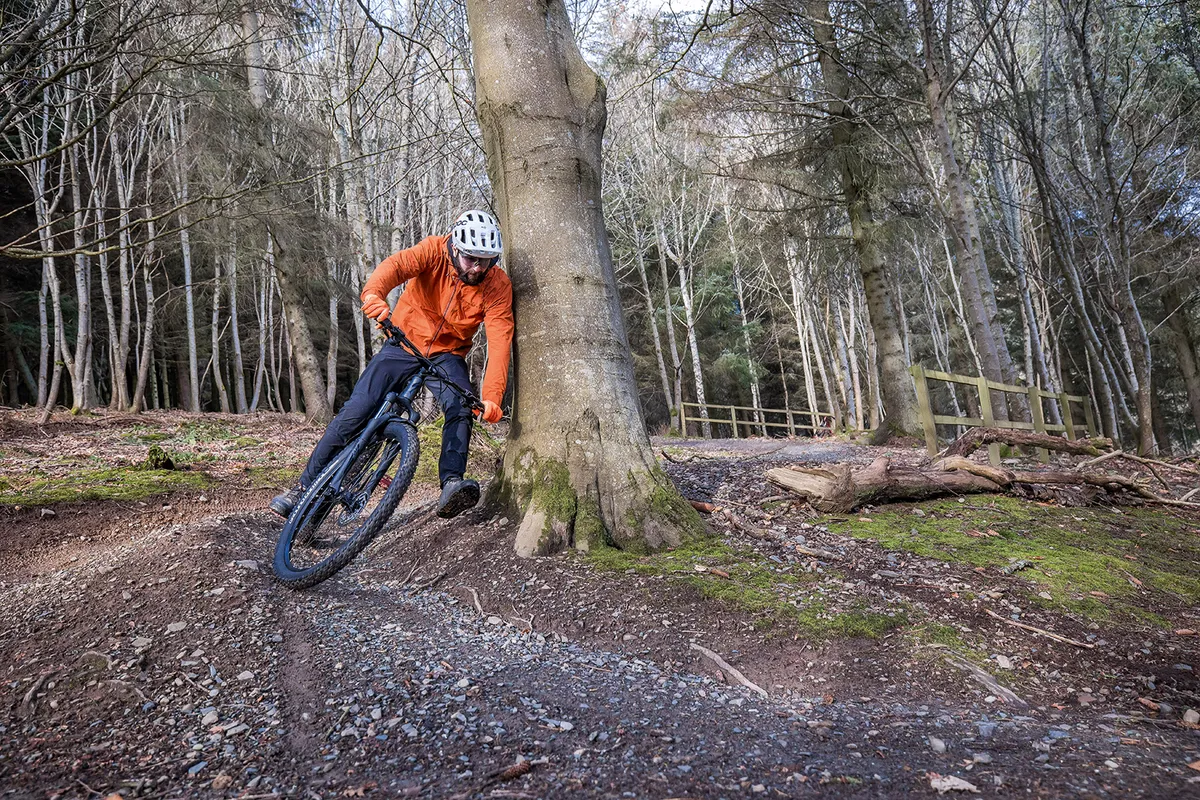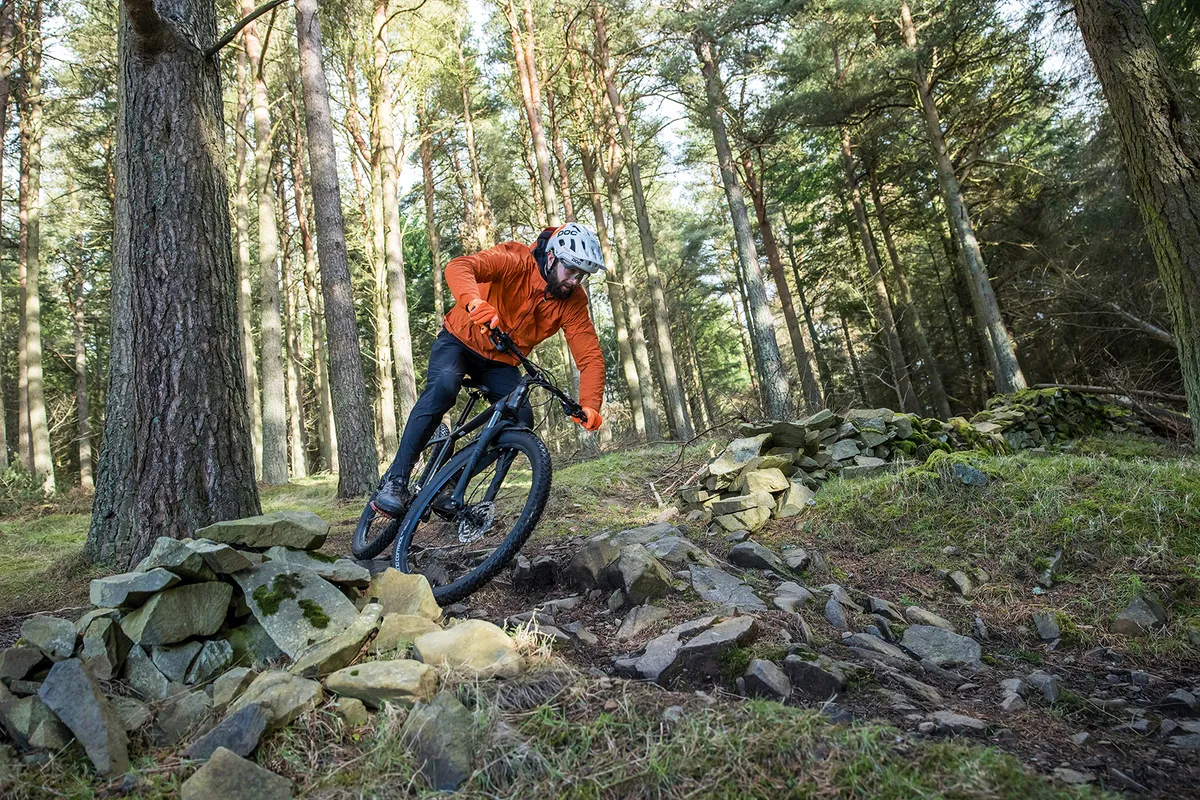Although the Specialized Rockhopper Comp has a 2x drivetrain and no dropper post, it does at least have cable routing for the latter.
It has a host of other features, too, including internal routing for the gear cables and rear brake hose, giving neater lines, plus a unique ‘RxTune’ for the Suntour fork, which varies according to frame size. The XS to M bikes roll on 650b (aka 27.5in) wheels, while the M to XXL are 29ers.
Built from Spesh’s A1 aluminium, designed to be lightweight but strong, the Rockhopper frame features butted tubing (with thinner walls in places to save weight, and thicker elsewhere for strength) and clean lines.
The 9×135mm quick-release rear axle rules out a future upgrade to Boost wheels. Inside the front triangle are two bottle cage mounts.
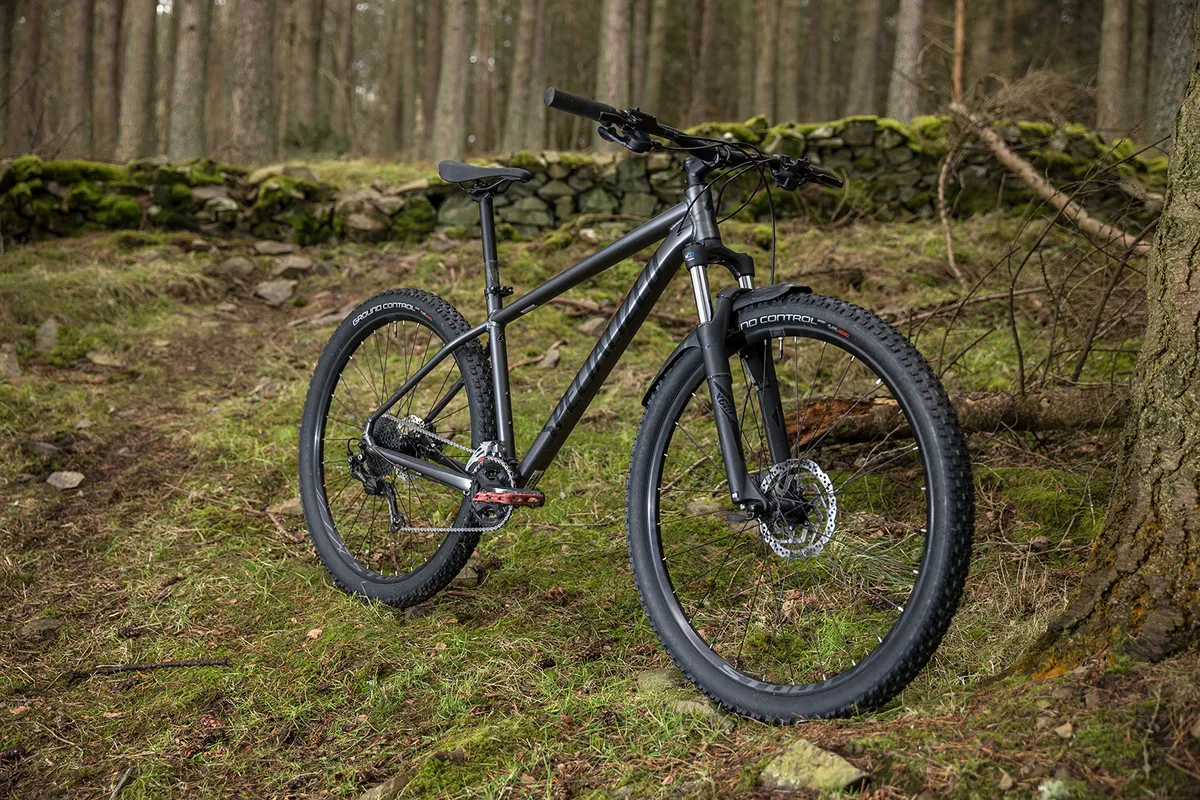
Specialized Rockhopper Comp 29 2x geometry
Specialized claims that the Rockhopper’s geometry enables the rider to tackle sharp, twisty trails with ease, while inspiring confidence on the descents.
It's given the large size 29er a 445mm reach, 68.5-degree head angle, which could make it feel short when standing on the pedals, and 1,152mm wheelbase, while the top tube is 630mm.
None of these figures are particularly daring and, bar the pretty steep head angle, all are similar to the other bikes I had on test, but the Rockhopper looks like a solid performer.
| | S | M | L | XL | XXL |
|---|---|---|---|---|---|
| Seat angle (degrees) | 73.5 | 73.5 | 73.5 | 73.5 | 73.5 |
| Head angle (degrees) | 68.5 | 68.5 | 68.5 | 68.5 | 68.5 |
| Chainstay (cm) | 44 | 44 | 44 | 44 | 44 |
| Seat tube (cm) | 36 | 40 | 45 | 50 | 56 |
| Top tube (cm) | 58.6 | 60.8 | 63 | 64.5 | 67.9 |
| Head tube (cm) | 9.5 | 9.5 | 10.5 | 12 | 13.5 |
| Fork offset (cm) | 4.6 | 4.6 | 4.6 | 4.6 | 4.6 |
| Trail (cm) | 9.7 | 9.7 | 9.7 | 9.7 | 9.7 |
| Bottom bracket drop (cm) | 6.2 | 6.2 | 6.2 | 6.2 | 6.2 |
| Bottom bracket height (cm) | 31 | 31 | 31 | 31 | 31 |
| Wheelbase (mm) | 1,105 | 1,128 | 1,152 | 1,178 | 1,203 |
| Standover (cm) | 73.2 | 75.4 | 78.1 | 82 | 85.3 |
| Stack (cm) | 60.7 | 61.6 | 62.6 | 64 | 65.4 |
| Reach (cm) | 40.5 | 42.5 | 44.5 | 46.5 | 48.5 |
Specialized Rockhopper Comp 29 2x kit
The 9-speed mech and shifter – from Shimano’s lower-budget Acera range – are paired with an 11-36t SunRace cassette, while the double crankset has 24t and 36t chainrings, which should give an ample spread of gears for both steep climbs and fast descents.
Specialized has specced a Suntour XCM fork with a coil rather than air spring, and given it its RxTune treatment, meaning it has either 90 or 100mm of travel and harder or softer spring rates depending on the frame size. My large test bike had 100mm of travel and a custom spring rate. The fork uses a 9×100mm QR front axle.
Stout-branded rims are built onto Shimano hubs and shod with Specialized’s own 2.3in-wide Ground Control tyres front and rear.
Specialized Rockhopper Comp 29 2x ride impressions
In a world of 1x drivetrains, the double crankset feels clunky. Because of the large jump between the two chainrings, changing from the big ring to the smaller one and vice versa requires multiple shifts on the cassette to maintain a comfortable pedalling cadence.
This interrupts flow on undulating climbs, and left me spinning out at times. However, keeping the chain on the 24t ring and only using the rear shifter creates too much chain slap and noise, so it’s preferable to shift between the chainrings instead where possible. Happily, the chain didn’t drop at all during the entire test period.
In general, the Rockhopper climbs well, and it doesn’t feel harsh over trail chatter. It also has plenty of grip and feels composed on rough trail-centre surfaces, which helps you to maintain control on steep ascents.
I only experienced limited front-wheel lift or wander on steeper ascents, helped by the traditional XC riding position that the bike put me in – I was fairly low down and stretched forward when seated. The own-brand Bridge Sport saddle proved to be pleasantly comfortable, due in part to its flat profile.
When standing up and pedalling, the bike feels quite short due to its diminutive reach (this is the horizontal distance from the centre of the bottom bracket to the centre-top of the head tube).
A shorter reach means that small weight changes affect grip and steering a lot quicker than they would on a longer bike, and makes it more difficult to ride well on technical trails, where ‘lazier’ handling is beneficial. The Rockhopper’s more responsive ride makes it most suited to descending smoother tracks.
On hardpack trail-centre surfaces, the Ground Control tyres provide plenty of predictable traction and roll impressively fast, but when pushed through turns, the Sport carcass struggles to hold its shape, especially at lower pressures.
I also found the limits of the tyres’ grip quite quickly on muddier ground. Shimano’s Alivio brakes have plenty of power and a solid bite point, but the long lever blades encourage two-finger braking, which isn’t ideal because you lose grip on the bar compared to the one-finger norm.
The sticky-feeling fork on my bike didn’t soak up small bumps well, which reduced front wheel grip and overall comfort.
Specialized Rockhopper Comp 29 2x bottom line
The Rockhopper would suit a beginner looking to dabble in mountain biking because its handling and cornering feel pretty good if you’re just tootling along.
However, its conservative geometry and some of its parts hold it back on tougher terrain – I found riding red and black routes tricky, especially at speed – and its upgrade potential is limited, so it’d be unable to ‘grow’ with a new rider as they progress.
How we tested
Bike brands are forever striving to offer the most performance and best value they can. While the pandemic and Brexit are clearly having a negative impact on prices, today’s sub-£1k bikes appear to represent a big leap forwards in terms of both parts and geometry, compared to their three- or four-year-old couterparts.
If these improvements translate to better performance on the trail, it’s great news for buyers on a budget.
We tested our four hardtails on a mix of the trails they’re most likely to be ridden on, ranging from fireroads and bridleways through to more technical trail-centre loops and singletrack, to find out exactly where they excel and where their limits are.
Also on test
- Carrera Fury
- Vitus Nucleus 29 VRS
- Cannondale Trail SE 4
Product
| Brand | specialized |
| Price | 749.00 EUR,675.00 GBP |
| Weight | 14.8300, KILOGRAM (L) - |
Features
| Fork | SR Suntour XCM coil, RxTune, 100mm (4.0in) travel |
| br_stem | Stout, 60mm |
| br_chain | KMC X9 EPT |
| br_frame | A1 aluminium alloy |
| Tyres | Specialized Ground Control Sport 29x2.3in |
| br_brakes | Shimano MT200, 180/160mm rotors |
| br_cranks | Stout, 36t/22t |
| br_saddle | Bridge Sport |
| br_wheels | Stout alloy rims on Shimano TX505 hubs |
| br_headset | Integrated |
| br_shifter | Shimano Acera |
| br_cassette | SunRace, 11-36t |
| br_seatpost | Alloy rigid |
| br_gripsTape | Specialized Trail lock-on |
| br_handlebar | Stout Mini Rise, 740mm |
| br_bottomBracket | Square-taper BSA73 |
| br_availableSizes | S, M, L, XL, XXL |
| br_rearDerailleur | Shimano Acera (2x9) |
